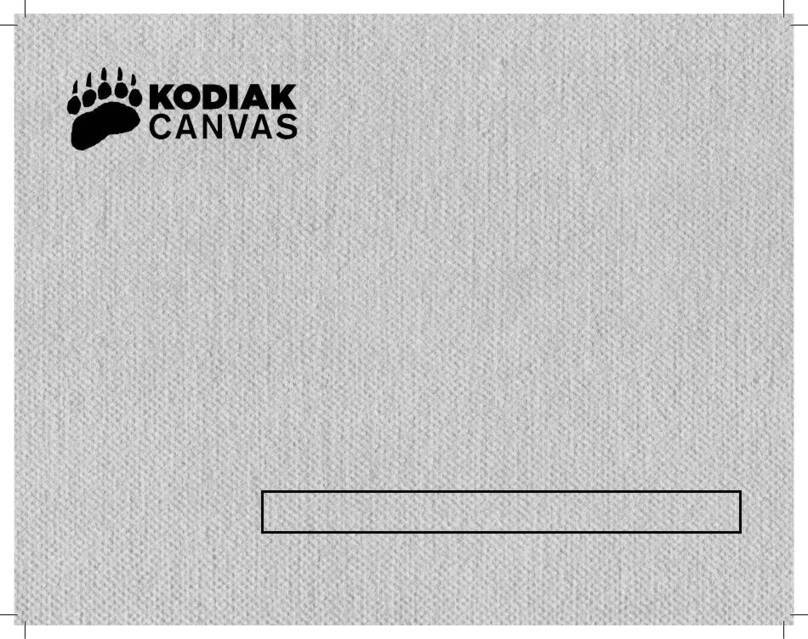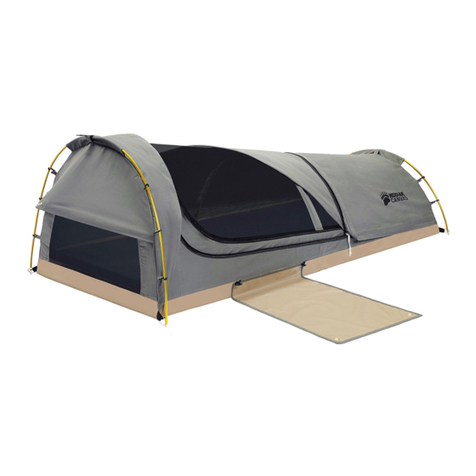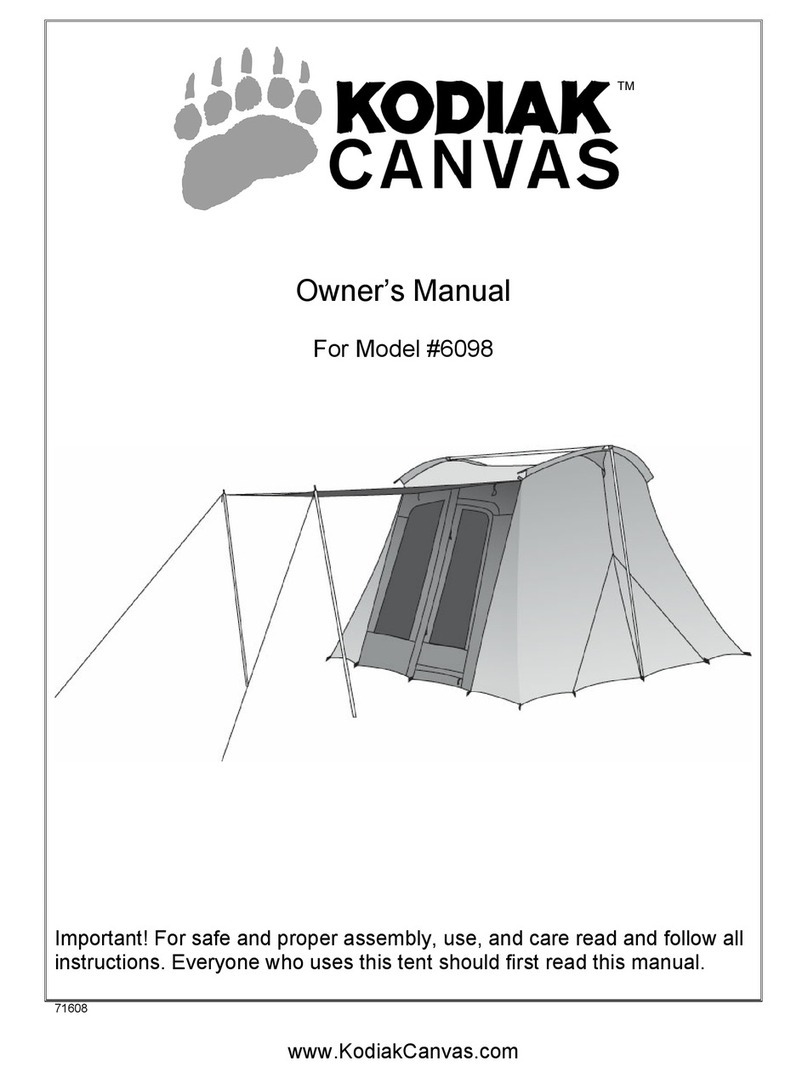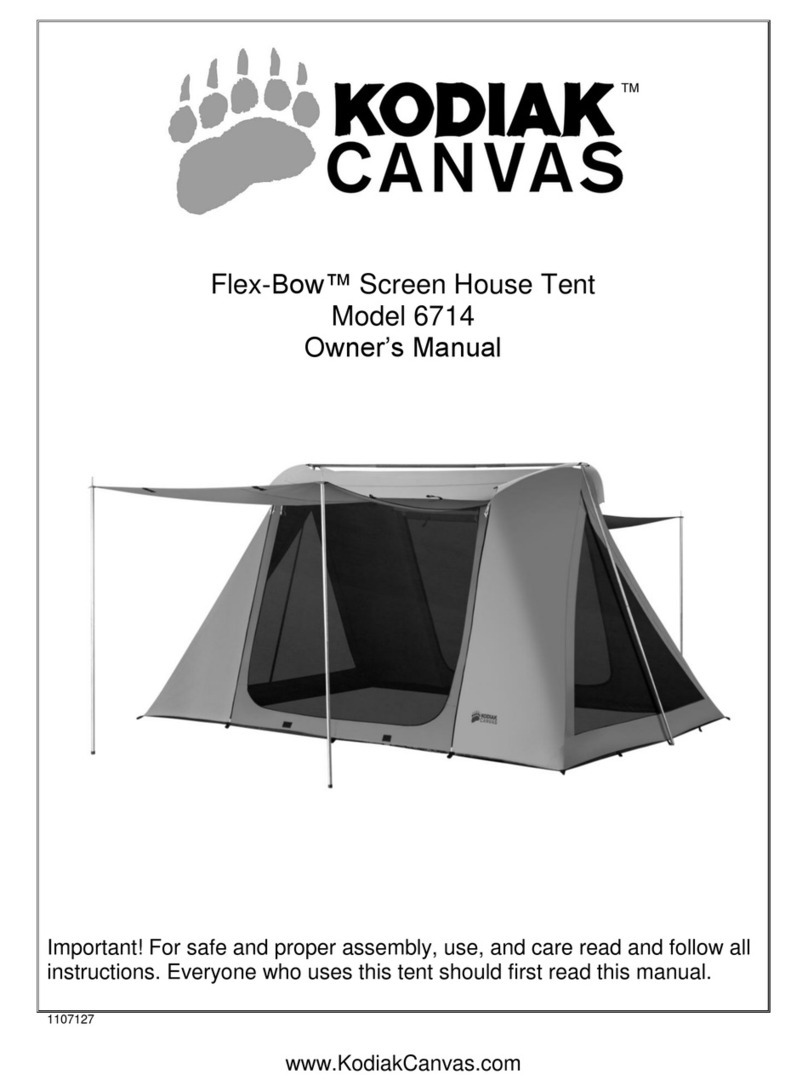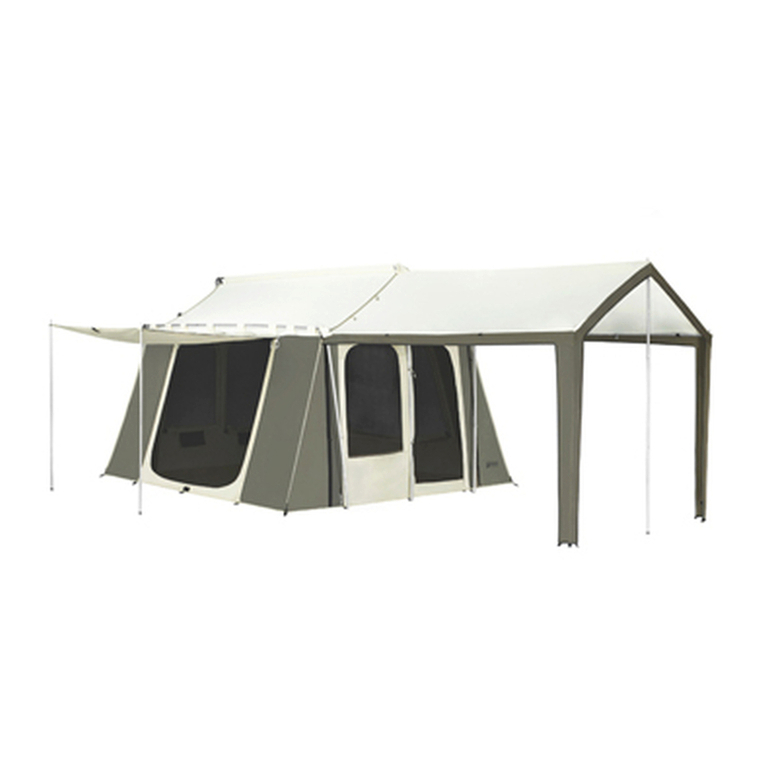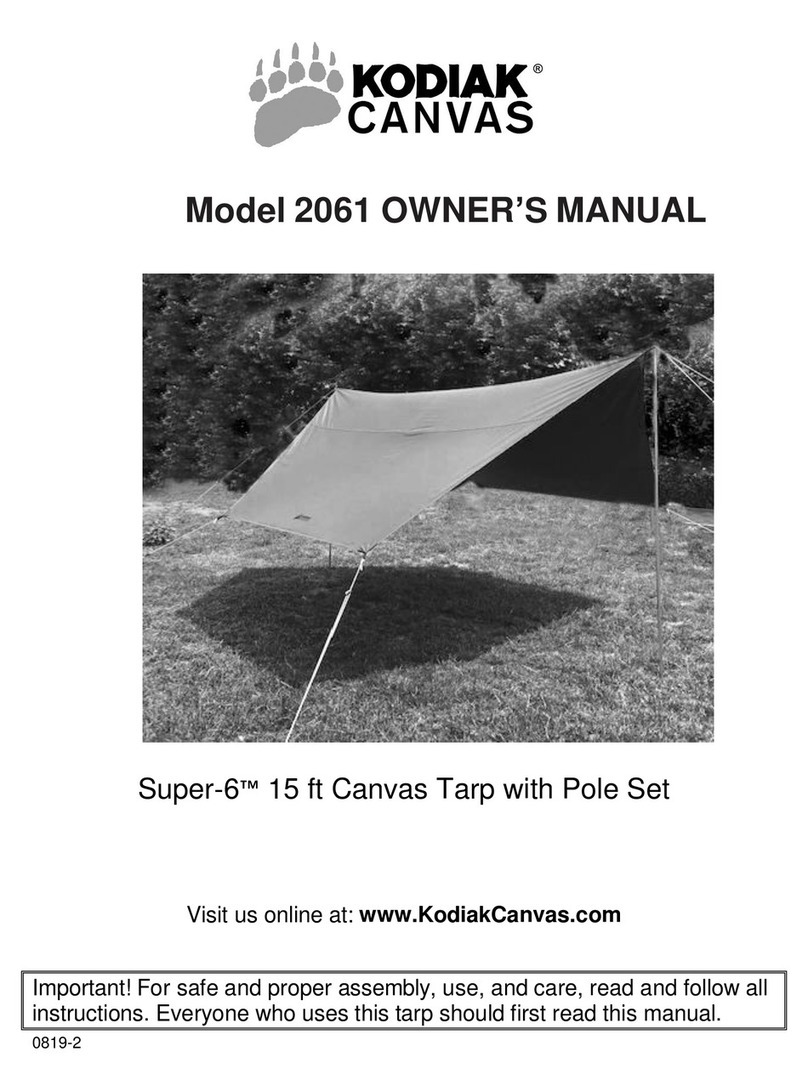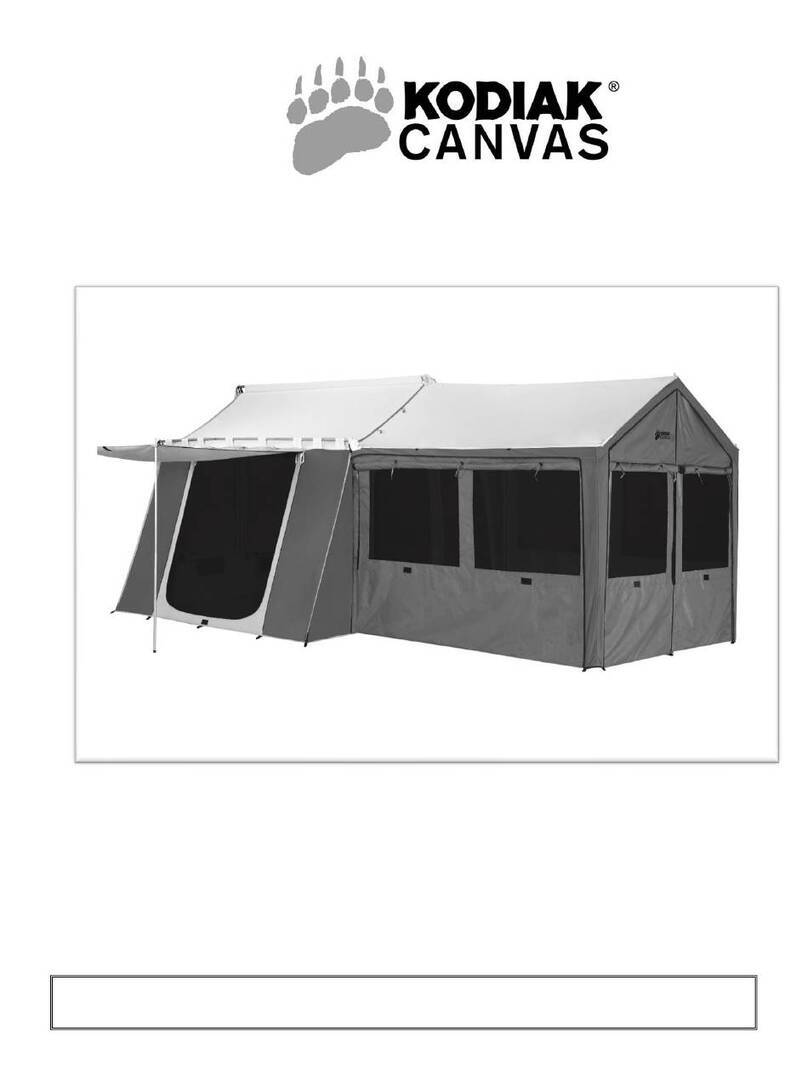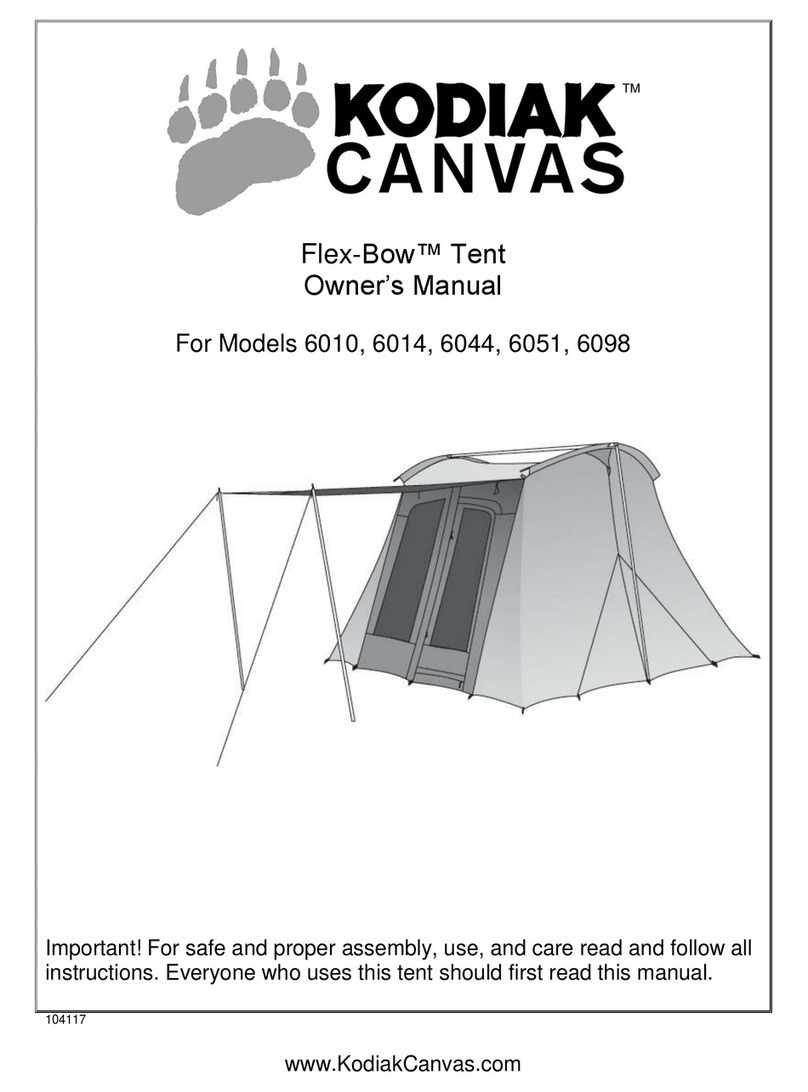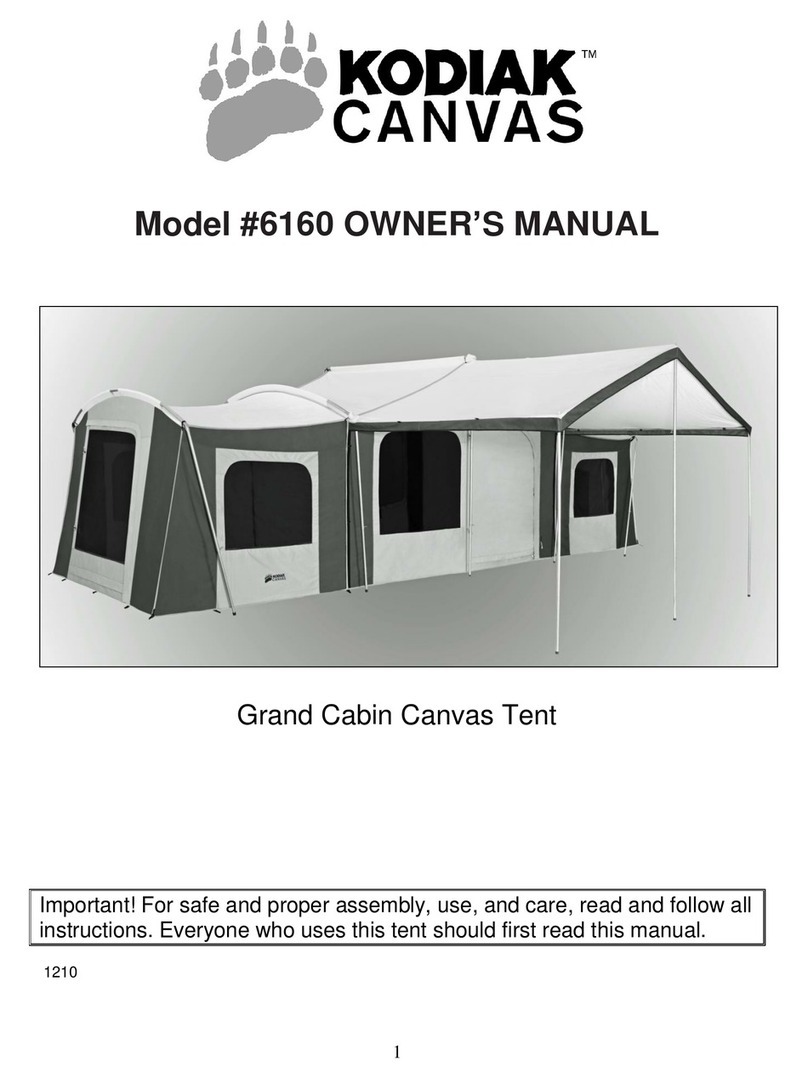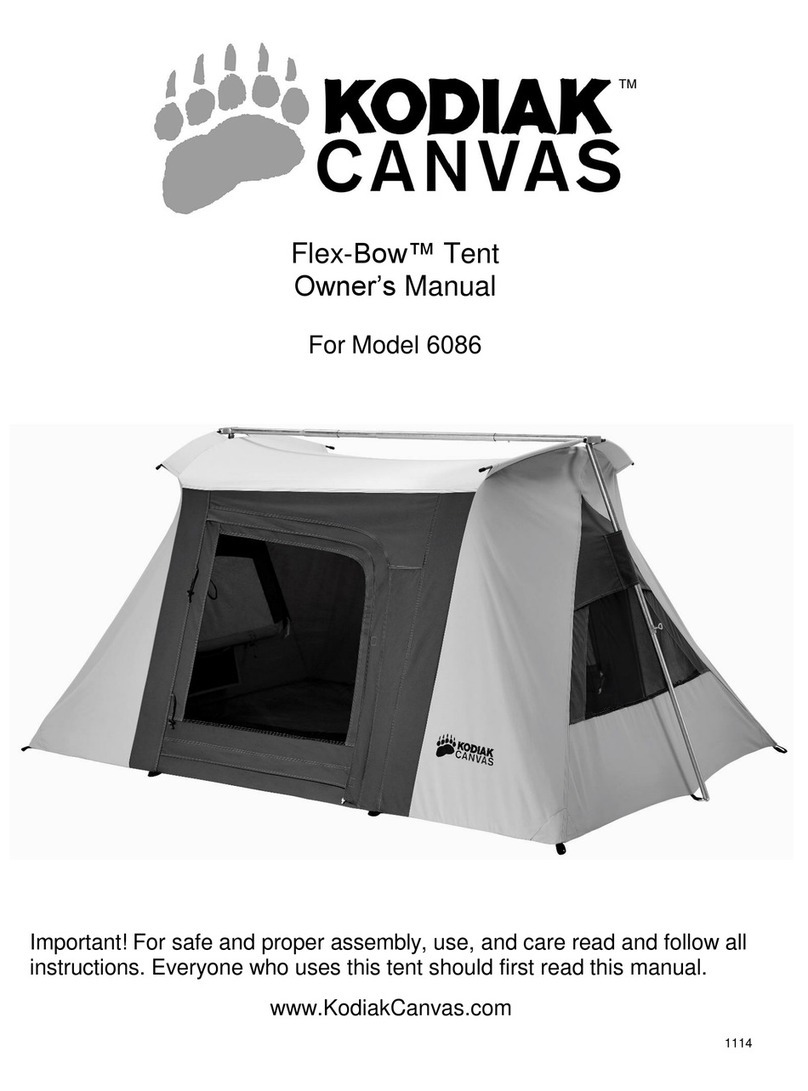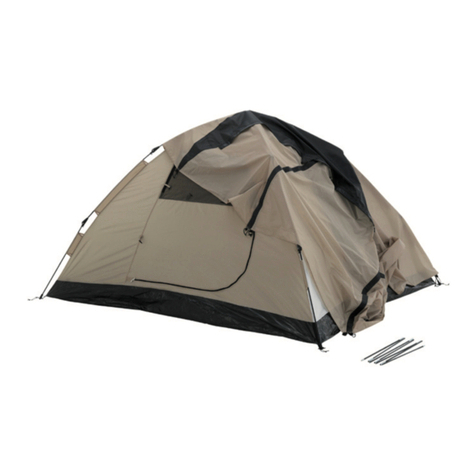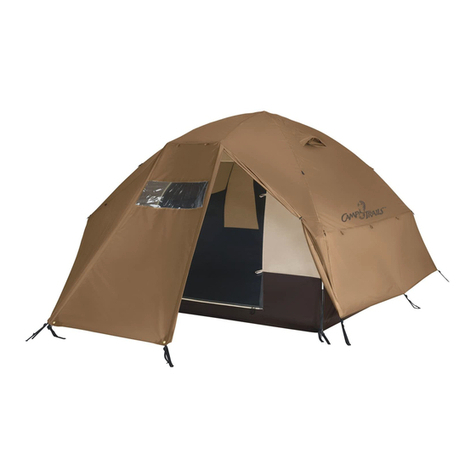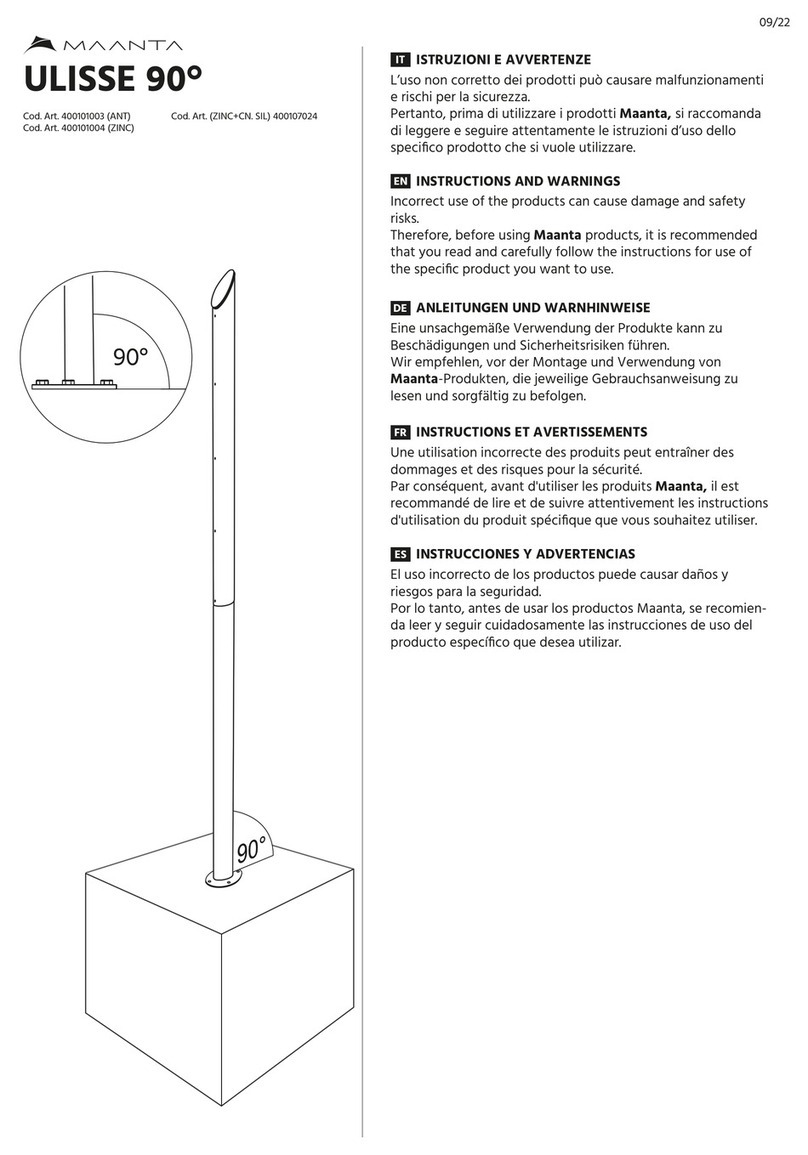To install, place the ends of the T through the loops (inside center ceiling). Extend the telescoping pole
until taut, and hand tighten thumbscrew. Tips: Don’t overextend pole—it just needs to gently push into the
ceiling. To take down, first lift pole to remove tension on thumbscrew, then unscrew.
Fig. 7 Center Support Pole Installation
Take Down and Storage
First, dry and clean out tent. Make sure your tent is completely dry. Zip down the windows, open the door,
let the tent air out to dry the inside. Sweep clean of any dirt or debris. Collapse the tent and remove all the
poles. Wrap and neatly store the guy ropes. Tips: 1) This tent has a lot of guy ropes. Save yourself the
frustration of a tangled guy rope mess. Wrap guy ropes, store them in the provided smoke alarm bag. 2) If
you have to break camp when the tent is wet, that is okay. Just be sure when you get home, to unroll,
open up, and dry out. The sooner the better.
Care
●
VERY IMPORTANT—Your tent must be completely dry before storage! STORING A WET OR DAMP
TENT, EVEN FOR A SHORT TIME, CAN RUIN IT AND VOID THE WARRANTY.
●
To clean tent, hose down with water and wipe with a cloth. Do not use soaps and detergents as
they
can damage the water-repellant treatment of the canvas.
●
Do not spray insecticides or bug repellant directly on the canvas. This may damage the water-
repellant
treatment.
●
For long-term storage, store in a cool, dry location that is not exposed to direct sunlight.
●
This tent is equipped with quality zippers. To prolong zipper life, do not grind the zippers around
corners.
If needed, pull the canvas, windows or doors to help zippers glide smoothly. Keep them clean
from dirt.
●
You
should rarely have to retreat the canvas. See Waterproofing below.
Other Notes
●
Condensation inside the tent is affected by the difference between inside and outside temperatures
and humidity. Condensation can be reduced by venting your tent. Condensation between the floor and
a
sleeping mat can be reduced by placing a ground cloth underneath the tent.
●
Some slight irregularities are normal with 100% cotton canvas and will not affect the performance
of
your tent.
Waterproofing
When your tent gets its first wet storm, you may get a few drops of water inside—don’t fear.
